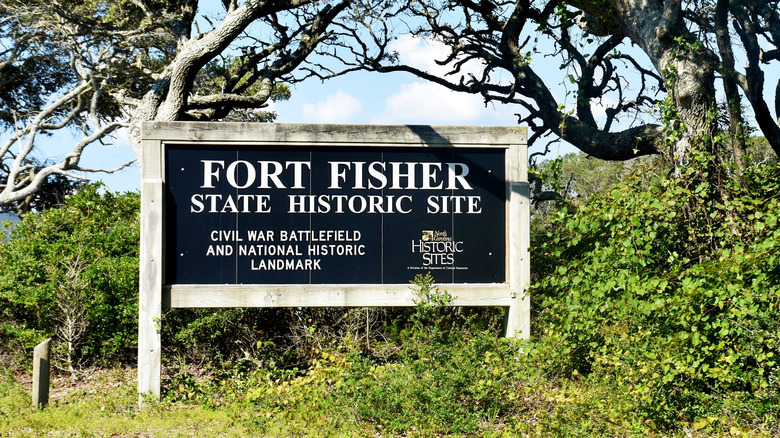History And Nature Stand United At A Civil War Fortress Overlooking North Carolina's Coast
As the Union blockade squeezed the Confederate coast during the Civil War, Fort Fisher in North Carolina took on ever more prominence. Until almost the end of the war, it kept open the port of Wilmington to blockade runners ferrying critical supplies. Its position on the Cape Fear River and Atlantic Ocean made it a particularly hard nut to crack, too, earning the sobriquet, "The Gibraltar of the South." In fact, the fort's fall in January 1865 took an assault of an estimated 8,500 soldiers carried by a large fleet — the largest amphibious landing in American history until World War II. The impact was immense, too, as it represented the last supply line to Robert E. Lee's army in Virginia, which surrendered soon after.
Today, Fort Fisher and the surrounding recreation area trains its proverbial guns on protecting loggerhead sea turtles, piping plovers, and other wildlife that nest in the salt marshes and sandy beaches. The 288 acres include ample recreation for humans, too, including swimming, fishing, boating, hiking, and birdwatching, as at Wrightsville Beach, North Carolina's best seaside town, just to the north. At the North Carolina Aquarium at Fort Fisher, the conservation and entertainment are then combined with education. The same goes for the remains of the fort, now Fort Fisher State Historic Site, which recounts the fort's role in the Civil War era. It's not the only war relic, either, as the site saw action again during World War II, leaving visitable remains.
Visiting Fort Fisher Recreation Area
Route 421 runs down the North Carolina coast from Wilmington, reaching Fort Fisher State Historic Site in about 30 minutes. The first stop is the visitor center, which contains a number of exhibits and artifacts related to the Civil War, as well as a 10-minute audiovisual program. From the backside, a trail loops around the remainder of the fort, complete with a restored gun emplacement and 32-pounder cannon. The Fort Fisher Monument stands nearby. Fort Fisher State Recreation Area begins a half mile south. Head past the parking lot to reach the aquarium. The centerpiece is a 235,000-gallon tank with sharks, a sea turtle, stingrays, and a moray eel. Other wildlife on display includes an albino alligator, bald eagle, and family of otters.
Two trails run south along the beach. The Basin Trail — also called "the Hermit Trail," after a man who famously lived there for 17 years and became an attraction himself — runs 1.1 miles through marshland, sand, and boardwalks. Along the way, find the World War II bunker. At the end, a wooden observation deck looks out to the Cape Fear River and Zeke's Island. In the distance is Southport, one of North Carolina's oldest and happiest coastal towns. The second trail goes along the beach for five miles and is open to hikers and four-wheelers, except marked nesting sites, making it a great place to spot sea turtles on this pristine North Carolina beach.

